Why Forex Traders Develop a Fundamental Outlook?
Developing a fundamental outlook is part of the development of a Forex trader. When traders first begin trading, the focus tends to be on technique and tactics, because learning how to put on the trades and how to read the charts is the most important task at hand. By time and practice, a Forex trader develops a better understanding of the fundamental data and how it impacts a Forex pair he/she trades. Eventually, he or she will eventually ask the following two questions:
-
What currency pairs should I be trading?
-
What direction is my next trade?
It is helpful to group currencies by their fundamental behaviors. Some currencies are stronger than others and that some currencies are fundamentally at extremes; those pairs become more interesting to trade.
Forex Fundamental Analysis Checklist and Action Plan
What is next after a Forex trader has developed a fundamental outlook and gained a better understanding of what currency to trade? To guide Forex traders in conducting their own fundamental analysis further, the next step they need to takes deals with creating their own fundamental analysis Forex checklist and action plan. The purpose of the fundamental Forex checklist is to make sure that Forex traders have the information to make some trade strategy decisions. As an example, we have listed below an action plan that you could follow:
-
List current global data on GDP, interest rates, and inflation levels.
-
Analyze price patterns in commodities such as oil, gold, copper.
-
Review the Trade-Weighted Index (TWI) of each currency to determine if any are probing key support or resistance.
-
Check the U.S. Dollar Index (USDX) and compare it to the TWI of the USD.
-
Analyze global interest rates and try to group currencies by:
Countries expected to raise rates
Countries expected to keep rates the same
Countries expected to lower rates
-
Choose which currency pairs to trade.
-
Watch the calendar for economic releases.
Of course, every trader has his or her own action plan and checklist. Even though it is different per person, the most important lesson here is that you reflect on your trading performance and how your action plan worked out. It is crucial to critically review your checklist and action plan, if necessary it is recommended to update and improve it.


